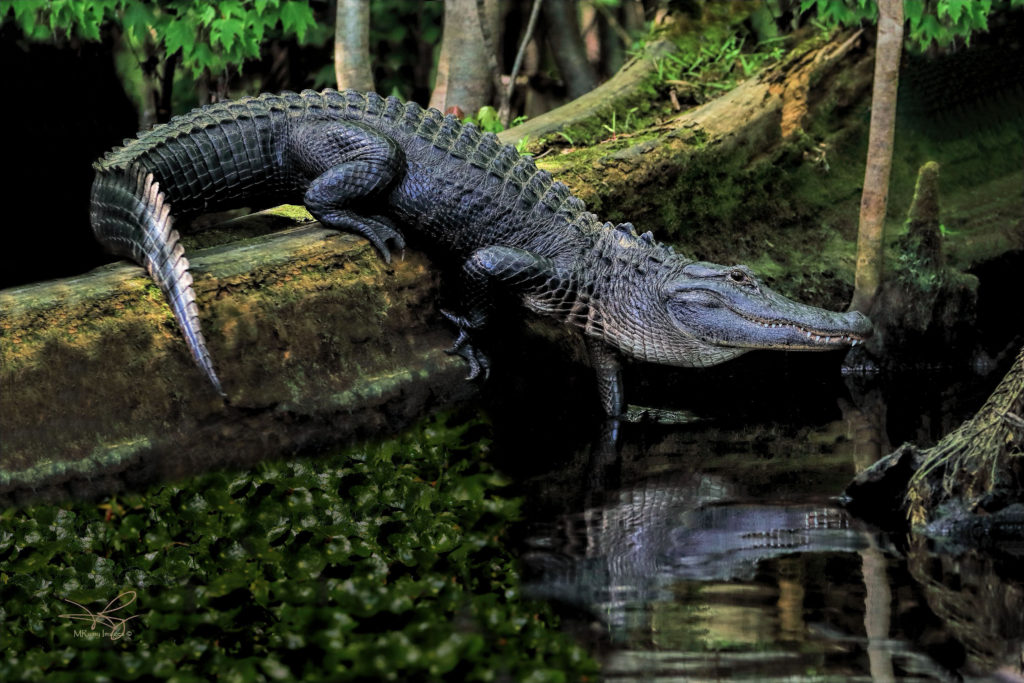About the Okefenokee Swamp
The Okefenokee Swamp, located in southeastern Georgia, is the largest blackwater wetland ecosystem in North America, and the least disturbed freshwater ecosystem on the Atlantic Coastal Plain. It is astoundingly beautiful, with moss-covered cypress trees standing above flowering plants floating on tea-colored blackwaters. Okefenokee is believed to be a Creek Indian word meaning “trembling earth” as some of the “land” in the swamp is really partially buoyant peat deposits that move and shake when walked on or when the wind blows on the vegetation and trees. The swamp covers approximately 165,000 hectares or about 640 square miles. The boundary expanded in January 2025, with the acquisition of another 22,000 acres, including land held by a variety of owners within a 1-mile fuel reduction zone adjacent to the refuge.
The Okefenokee National Wildlife Refuge was established to provide “refuge and breeding ground for migratory birds and other wildlife.” The refuge provides habitat for threatened and endangered species, such as red-cockaded woodpeckers, wood storks and eastern indigo snakes. The most iconic species that resides in the Okefenokee NWR, is the American alligator. With an estimated population of approximately 15,000 alligators living in the Okefenokee Swamp, visitors are almost guaranteed to have a few sightings of these important and beautiful reptiles. Other notable bird species include swallow-tailed kites, sandhill cranes, Bachman’s sparrows, prothonotary warblers, red-shouldered hawks and barred owls. Other reptilian residents include: gopher tortoise, timber rattlesnakes, Florida softshell turtles and numerous species of water snakes.
A brief history of the Okefenokee Swamp
Most of the swamp, 93%, is protected within the Okefenokee National Wildlife Refuge (ONWR). A National Wildlife Refuge is like a National Park for plants and animals: humans are welcome as visitors, but the management emphasis is on maintaining high quality habitats and conducting ecosystem research. Refuge lands include terrestrial forest lands on the swamp perimeter, and here the Refuge is restoring and managing the native longleaf pine ecosystem.
The refuge is surrounded by commercial forest lands, state forests and blueberry farms, out to a distance of several miles on the east and north and several tens of miles on the west and south.
400,000 visitors enter each year through three access points: Stephen C. Foster State Park, accessed from Fargo, Ga., in the southwestern portion of the swamp; the private, non-profit Okefenokee Swamp Park on the northern edge of the swamp; and the Okefenokee National Wildlife Refuge on the eastern side of the swamp near Folkston, GA. Each site has foot trails, including boardwalk trails, and boat access with canoe, kayak, and small motorboat rentals. There are 120 miles of water trails for canoeing and kayaking within the swamp.
According to GaRivers.org, the Wildlife Refuge attracts nearly 725,000 visits a year. It supports more than 750 jobs, and generates an estimated $64.7 million in economic activity in the four counties surrounding the Refuge: Charlton, Clinch, and Ware counties in Georgia and Baker County, Florida.
USA Today Reader’s Choice 2025, No. 1 Wildlife Refuge to visit.

